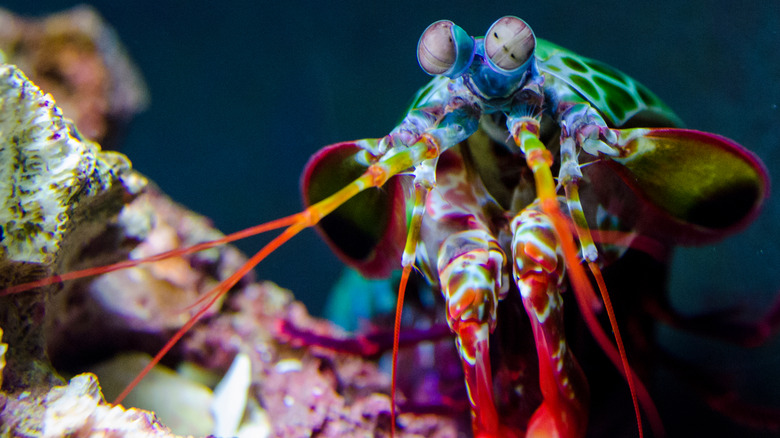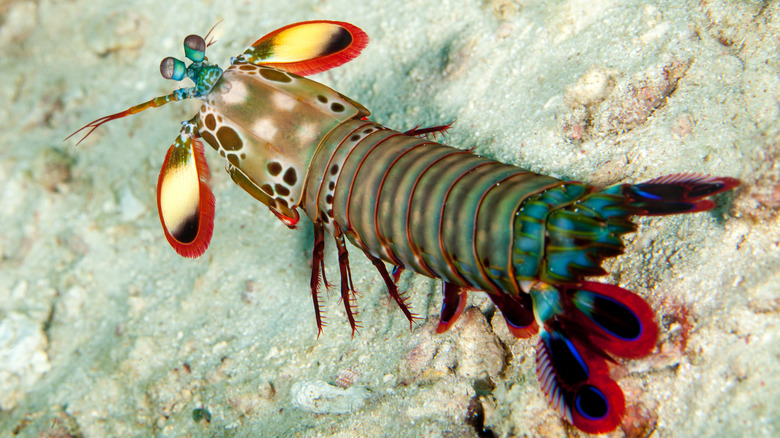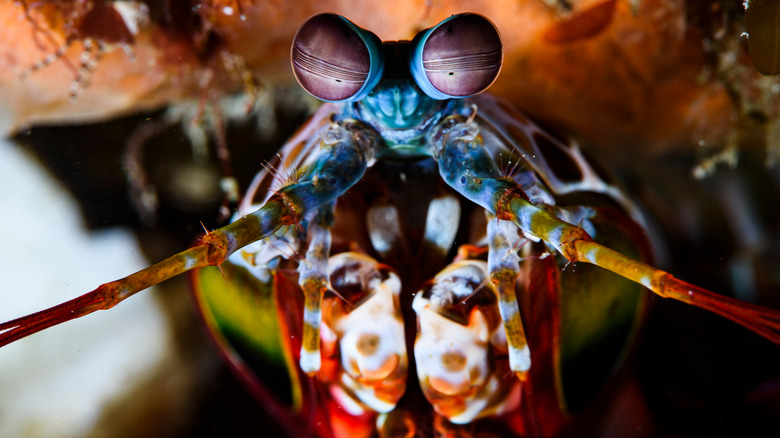Why The U.S. Army Is Building A Robot That Can Punch Like A Mantis Shrimp
A surprising amount of technology is inspired by animals. Raptors packing Sidewinder missiles shoot down the occasional suspicious balloon. Scientists deploy robotic sloths to collect vital ecological data. Spot the mechanical dog patrols for malefactors on a Hyundai factory floor.
That said, humans tend to pick classically charismatic animals when it comes to branding. Predatory birds and venomous snakes are cool. Loyal dogs and fuzzy sloths are cute. An unbiased observer might not, therefore, automatically expect the U.S. Army to fund research into replicating the behavior of a reef-dwelling shrimp.
And yet, the Army reports that studies are underway to mimic the explosive power — not the snap of a cobra or the bite of a great white — from the punch delivered by the small crustacean. What may sound like textbook government overspending is actually an in-depth study of one of the most remarkable reactions in the animal kingdom, one that could potentially reshape the design strategy of military and civilian equipment worldwide.
Big violence, small package
The crustacean in question is the mantis shrimp. Per the Barrier Reef Foundation, there are more than 450 species of mantis shrimp, mostly living in burrows throughout the Indian and Pacific Oceans. The shrimp are generally quite small and often have beautifully colored shells that make them popular in the saltwater aquarium trade.
Also, relative to their size, mantis shrimp deliver the single most powerful punch in the animal kingdom. A blow from a mantis shrimp, an animal that averages around four inches in length and under three ounces in weight, can shatter aquarium glass and break human bone. Fans call them "thumb splitters," and YouTube videos abound with unfortunate individuals finding out why. Here's one breaking a glass test tube standing between it and lunch.
Naturally, the Army's interest is in just how the mantis shrimp generates so much force with so little time, heft, and range.
The technology of nature
While the Army-funded study is ongoing, it has already revealed that the mantis shrimp relies on a fairly simple mechanical structure to achieve such a powerful impact: a latch-actuated loaded spring. In simple terms, a structure in the shrimp's body is held under enormous compressive tension by the biological equivalent of a latch. All the shrimp has to do to unleash a frankly unreasonable degree of violence is release that latch and allow the force to follow the path of least resistance. Exceptional sight – according to Science Australia, mantis shrimp see 12 color channels to humanity's 3, plus UV and polarized light – keeps those crushing strikes on target, making a potent tool to disable prey and fend off predators.
The resulting blow is so powerful that humans, as yet, have failed to replicate it by artificial means. The Army's ongoing study of the exact structures and behaviors involved in the shrimp's movement could open up a whole new field of applications for the simple spring-under-pressure principle, potentially improving and simplifying designs throughout engineering.


